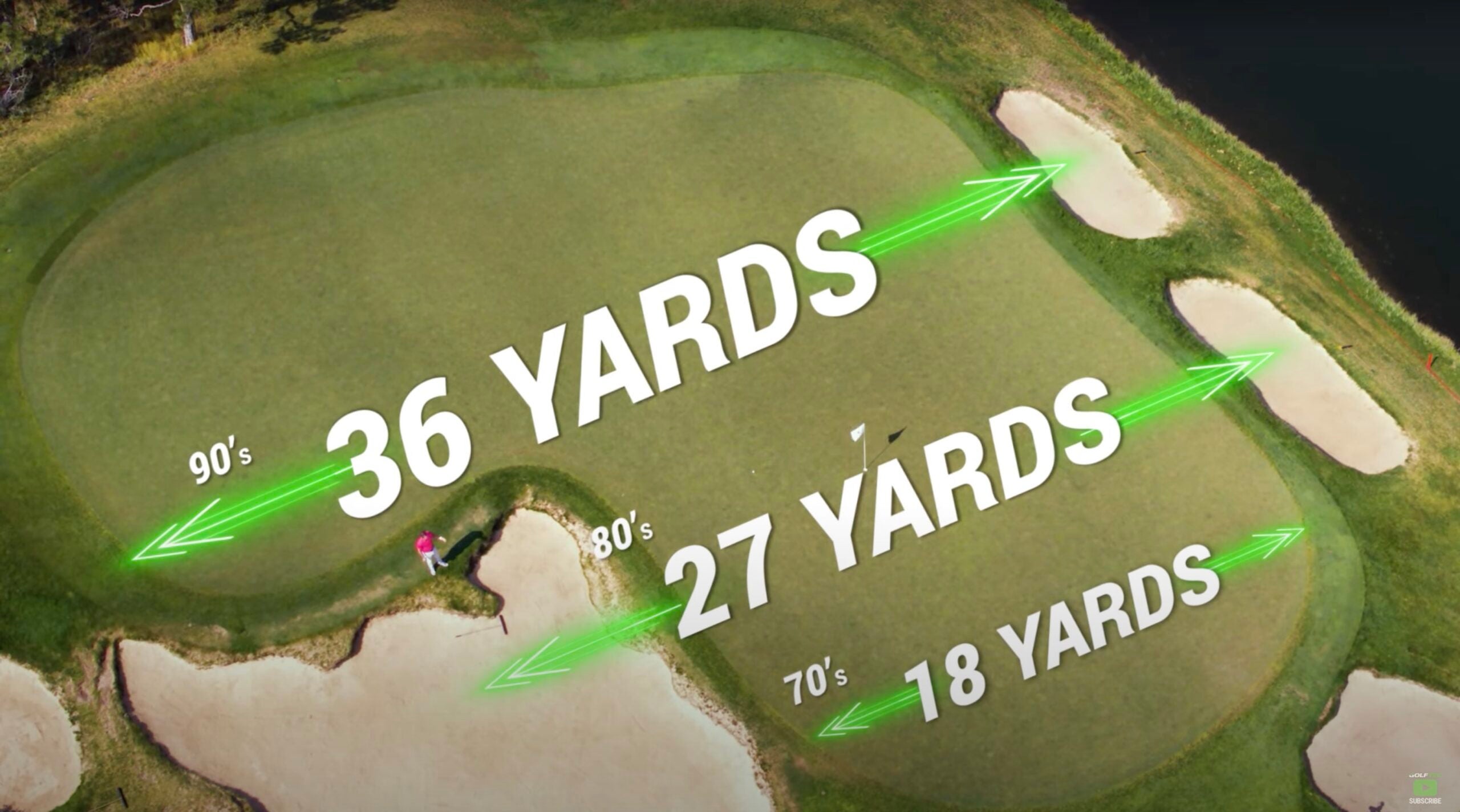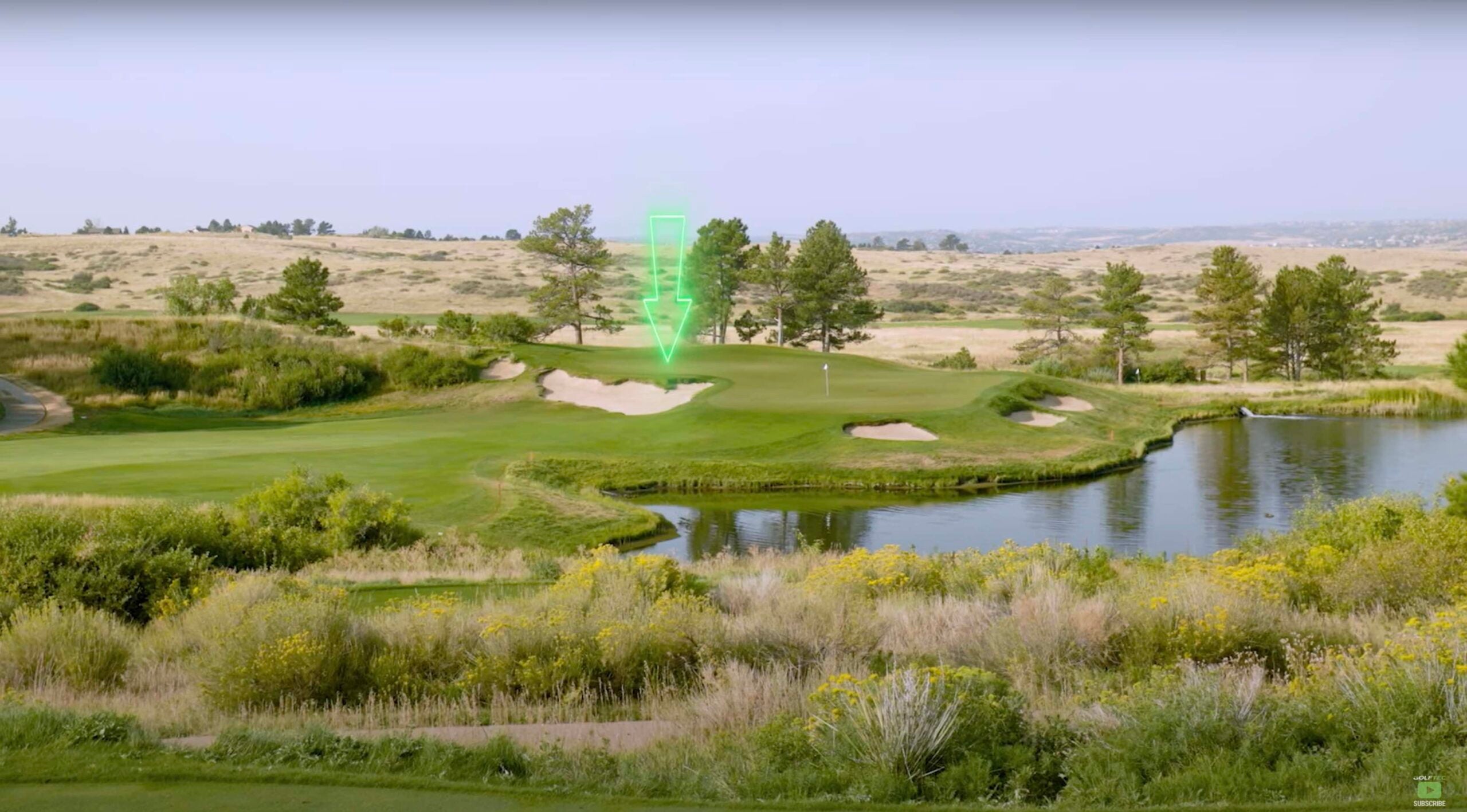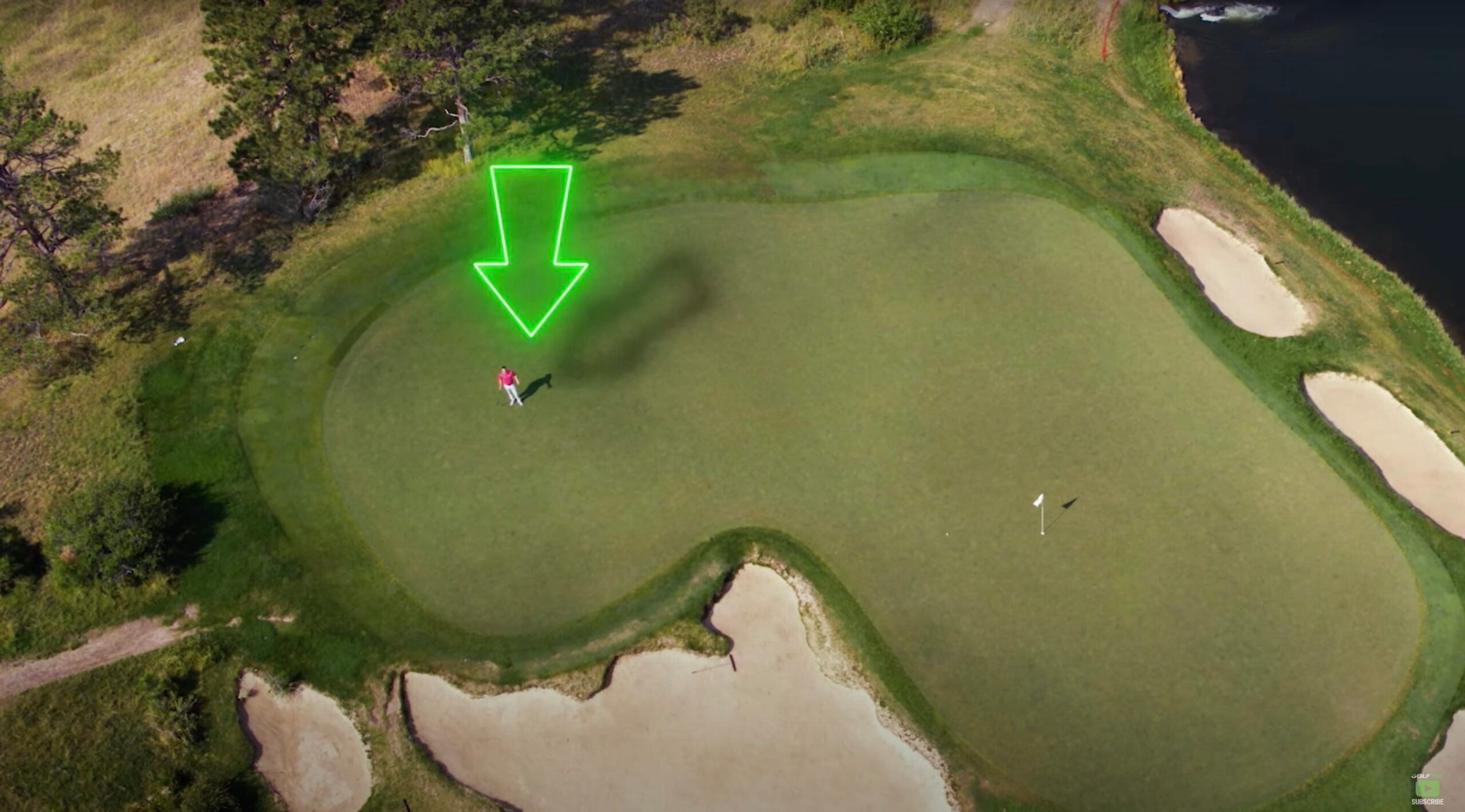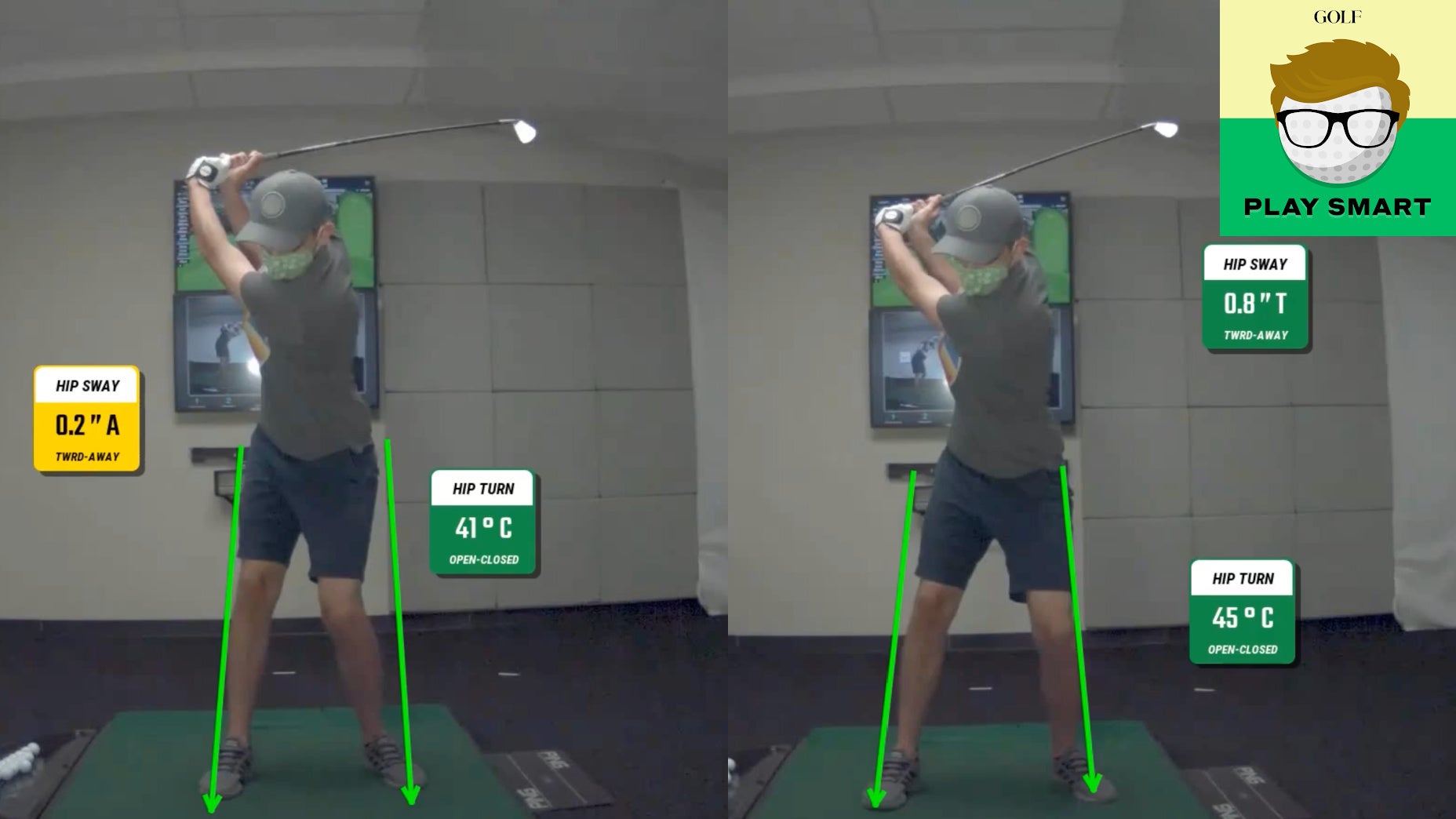
Aiming away from the pin will often lead to the best results
GOLFTEC
Golf is a game if misses, that well-worn cliche is one we’ve all come to accept at this point. Yet an unfortunate truth is that those who need to understand that message the most — to play to their misses, rather than plan for a handful good shots — often don’t know how to put it into action.
That’s why I love this practical tip from GOLF Top 100 Teacher Nick Clearwater on GOLFTEC’s YouTube channel, which golfers can put to use the next time they’re on the course.
Here’s the hole in question: A par 3 with the pin up front, bunkers left and right, with water short and flanking the right.
Most regular golfers look at this hole and see a reasonably accessible avenue to the pin. Take dead aim, and hope to hit it between the bunkers.
Right?

Take dead aim? Not so.
GOLFTEC
Wrong.
It all comes down to dispersion patters, which is a fancy term which encompasses a grouping of shots. Hit 20 shots at one target; let’s say your leftmost golf ball misses 10 yards left, and your rightmost misses 10 yards to the right. That means you have a dispersion pattern 20 yards wide.
Clearwater has studied the dispersion pattens of golfers of all levels, and found that the average 90s shooter’s side-to-side dispersion pattern is 36 yards wide. And when your average shot could land anywhere within a nearly 40 yard-wide zone, taking dead aim at the pin means about half your shots will land in the water, and most of the rest of them will end up in one of the nearby bunkers.

The average 90s shooter hits this iron shot within a 36 yard gap
GOLFTEC
The smart golfer navigates around the course in a way that their average-and-bad shots are still playable, and when a large bulk of those underwhelming shots end up in the worst possible spot (the water), it’s a clear sign you’re not doing it right.
That’s why Clearwater, says 90s golfers would be best served to aim just inside the right edge of that left bunker. 80s golfers, at the right edge of it, and 70s shooters on the left edge of the green.

Here’s where the average 90s golfer should aim
GOLFTEC
Aiming at the bunker, rather at the pin, is somewhat counterintuitive, but the effect of it is a good one: It shifts the center of your dispersion pattern left. The result will be almost no shots ending in the water, and still about half of them on the green.
This is what playing to your misses looks like, and yes, it means that occasionally you may flush a perfect shot that ends up not flying at the pin.

This is what playing your misses looks like.
GOLFTEC
Pair the unique shape of this particular green and the fact that most recreational golfers miss short, Clearwater suggests clubbing up multiple times when aiming at the spot.
Looking at it from overhead, here’s where you should actually be aiming to that front right pin.

Pretend like the pin is back left to get the best overall results
GOLFTEC
It may not be the most glamorous, take-dead-aim-and-throw-caution-to-the-wind approach, but it works. Give it a try, and your scorecard will eventually thank you for it.
You can watch the full video right here or sign up for a lesson at GOLFTEC below.
All of our market picks are independently selected and curated by the editorial team. If you buy a linked product, GOLF.COM may earn a fee. Pricing may vary.
Try OptiMotion at a GolfTec near you
Fill out this form to book a swing evaluation or club fitting and begin your journey to better golf.









